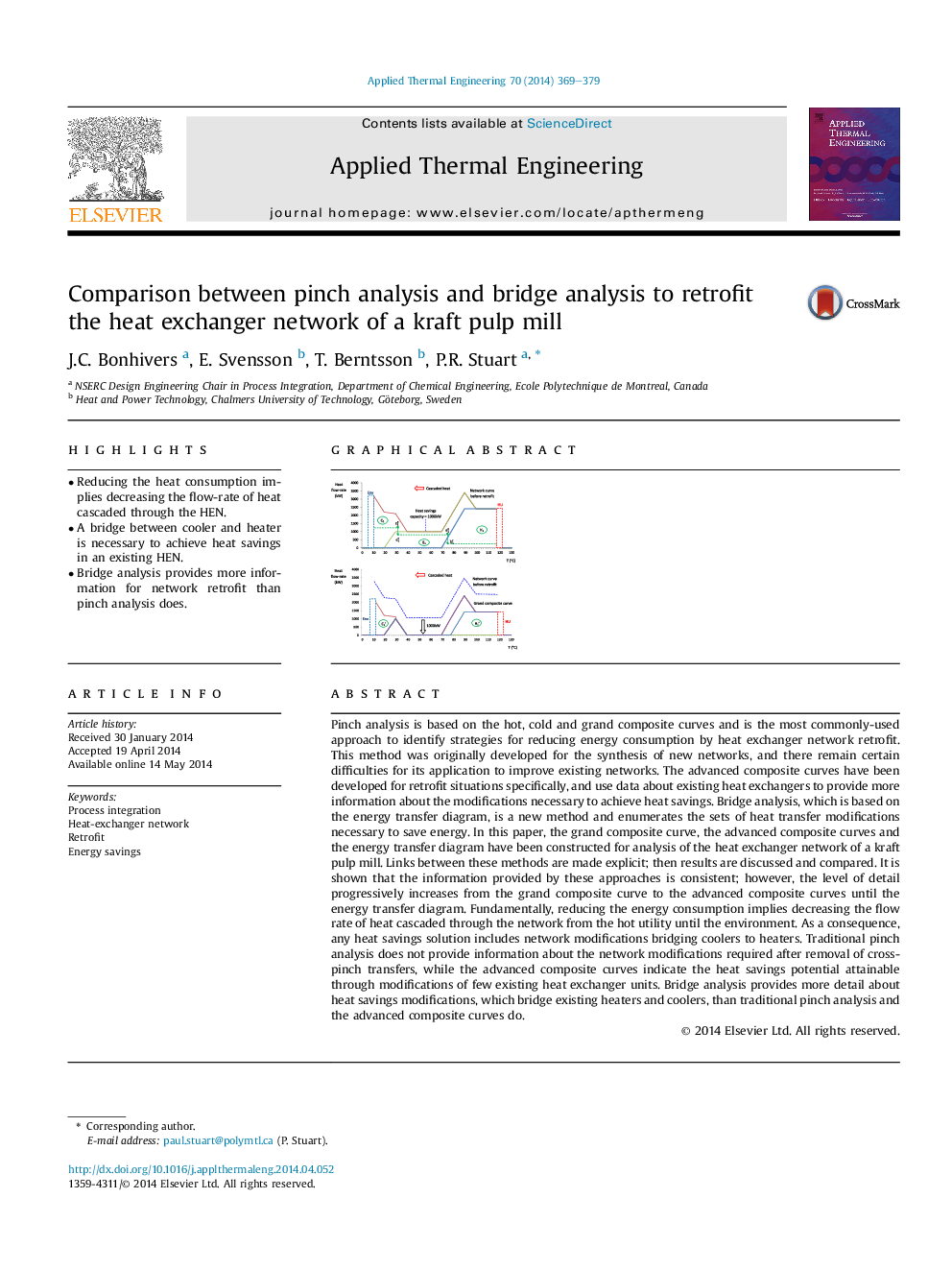| کد مقاله | کد نشریه | سال انتشار | مقاله انگلیسی | نسخه تمام متن |
|---|---|---|---|---|
| 646280 | 884560 | 2014 | 11 صفحه PDF | دانلود رایگان |
• Reducing the heat consumption implies decreasing the flow-rate of heat cascaded through the HEN.
• A bridge between cooler and heater is necessary to achieve heat savings in an existing HEN.
• Bridge analysis provides more information for network retrofit than pinch analysis does.
Pinch analysis is based on the hot, cold and grand composite curves and is the most commonly-used approach to identify strategies for reducing energy consumption by heat exchanger network retrofit. This method was originally developed for the synthesis of new networks, and there remain certain difficulties for its application to improve existing networks. The advanced composite curves have been developed for retrofit situations specifically, and use data about existing heat exchangers to provide more information about the modifications necessary to achieve heat savings. Bridge analysis, which is based on the energy transfer diagram, is a new method and enumerates the sets of heat transfer modifications necessary to save energy. In this paper, the grand composite curve, the advanced composite curves and the energy transfer diagram have been constructed for analysis of the heat exchanger network of a kraft pulp mill. Links between these methods are made explicit; then results are discussed and compared. It is shown that the information provided by these approaches is consistent; however, the level of detail progressively increases from the grand composite curve to the advanced composite curves until the energy transfer diagram. Fundamentally, reducing the energy consumption implies decreasing the flow rate of heat cascaded through the network from the hot utility until the environment. As a consequence, any heat savings solution includes network modifications bridging coolers to heaters. Traditional pinch analysis does not provide information about the network modifications required after removal of cross-pinch transfers, while the advanced composite curves indicate the heat savings potential attainable through modifications of few existing heat exchanger units. Bridge analysis provides more detail about heat savings modifications, which bridge existing heaters and coolers, than traditional pinch analysis and the advanced composite curves do.
Figure optionsDownload as PowerPoint slide
Journal: Applied Thermal Engineering - Volume 70, Issue 1, 5 September 2014, Pages 369–379
